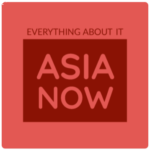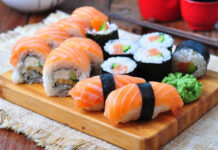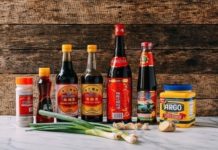Malay fashion is diverse and reflects the cultural heritage of the Malay people, who are the largest ethnic group in Malaysia, as well as Indonesia, Brunei, and Singapore. Malay fashion is characterized by a mix of traditional and modern elements, with a focus on modesty and comfort.
Some of the key features of Malay fashion include:
- Use of traditional fabrics: Malay fashion often incorporates traditional fabrics such as batik, songket, and tenun. Batik is a type of cloth that is dyed using wax-resistant techniques, while songket and tenun are woven fabrics that often feature intricate designs and patterns.
- The use of traditional fabrics is a key characteristic of Malay fashion. Batik, songket, and tenun are three of the most well-known traditional fabrics used in Malay fashion.
- Batik is a fabric that is dyed using wax-resistant techniques. The fabric is first treated with wax, which creates a pattern by preventing the dye from reaching certain areas of the fabric. The wax is then removed, revealing the dyed pattern. Batik fabrics are often made from cotton or silk and are used to create a wide range of garments, including dresses, blouses, and skirts.
- Songket is a type of brocade fabric that is traditionally woven with gold or silver threads. The fabric is made using a supplementary weft technique, where the additional threads are woven over the base threads to create a pattern. Songket fabrics are often used to create traditional Malay garments such as the baju kurung, a long-sleeved dress worn by women, and the baju Melayu, a loose-fitting shirt worn by men.
- Tenun, on the other hand, is a handwoven fabric that is made using a traditional backstrap loom. The fabric is often made from natural fibers such as cotton, silk, or wool, and features intricate patterns and designs. Tenun fabrics are used to create a variety of garments and accessories, including shawls, scarves, and bags.
- Overall, the use of traditional fabrics such as batik, songket, and tenun is an important aspect of Malay fashion, reflecting the cultural heritage and craftsmanship of the Malay people. These fabrics are often used in combination with modern cuts and designs, creating a unique and vibrant style that is recognized around the world.
- Modesty: Modesty is an important element of Malay fashion, and traditional Malay clothing often covers the body from neck to ankle. Women typically wear long dresses or skirts, while men wear shirts and pants.
- The most common garment worn by Malay women is the baju kurung, a long-sleeved dress that falls to the ankles. The baju kurung is often worn with a headscarf, or hijab, which covers the hair and neck.
- Men’s clothing in Malay fashion is also modest and typically covers the body from the neck to the ankles. The baju Melayu, a loose-fitting shirt worn by men, is a traditional Malay garment that is often paired with loose-fitting pants or shorts.
- Modesty in Malay fashion is not just about covering the body, but also about the cut and style of the garments. Traditional Malay clothing is often loose-fitting and comfortable, allowing for ease of movement and breathability in the hot and humid climate of Southeast Asia.
- While modesty remains an important aspect of Malay fashion, modern trends have also influenced the styles and cuts of Malay clothing. Today, it is common to see Malay fashion designers incorporating modern cuts and silhouettes into their designs while still maintaining modesty and comfort.
- Comfort: Comfort is also an important consideration in Malay fashion, particularly in the hot and humid climate of Southeast Asia. Loose-fitting clothing made from lightweight fabrics such as cotton and silk are popular choices.
- Loose-fitting clothing made from lightweight fabrics such as cotton and silk are popular choices for both men and women.
- Cotton is a breathable and absorbent fabric that is commonly used in Malay fashion. It is ideal for hot and humid climates as it allows air to circulate around the body, keeping the wearer cool and comfortable. Cotton is often used to make traditional Malay garments such as the baju kurung and baju Melayu.
- Silk is another popular fabric used in Malay fashion. While it is not as breathable as cotton, it is lightweight and has a luxurious feel. Silk fabrics are often used to make traditional Malay garments for special occasions such as weddings and festivals.
- In addition to fabric choice, the cut and style of Malay clothing also play a role in comfort. Loose-fitting garments allow for air circulation and movement, while avoiding tight-fitting clothing helps prevent overheating and discomfort.
- Overall, comfort is an important consideration in Malay fashion, and designers often strive to create garments that are not only stylish but also practical and comfortable for everyday wear in the tropical climate.
- Modern influences: In recent years, Malay fashion has also been influenced by modern fashion trends. Many designers incorporate modern cuts and silhouettes into their designs, while still incorporating traditional elements such as batik or songket.
- Many Malay fashion designers have been incorporating modern cuts, styles, and materials into their designs, while still preserving traditional elements such as batik and songket.
- For instance, designers are experimenting with new fabrics and materials to create unique and innovative designs. They are also creating new cuts and silhouettes that cater to the needs of modern customers who are looking for comfortable and stylish clothes that reflect their cultural heritage.
- In addition, fashion shows and events, such as the Kuala Lumpur Fashion Week and the Malaysia International Fashion Week, have given local designers a platform to showcase their collections to a global audience, which has helped to elevate the profile of Malay fashion on the international stage.
- Moreover, social media platforms such as Instagram have also played a crucial role in popularizing Malay fashion. Many Malay fashion designers and influencers have built large followings on social media, allowing them to reach a wider audience and showcase their designs to a global market.
- Overall, the influence of modern fashion trends has brought new energy and creativity to Malay fashion, while still preserving the rich cultural heritage of the Malay people.
- Hijab fashion: Many Malay women also wear the hijab, a headscarf worn as a sign of modesty and faith. Hijab fashion has become an increasingly important aspect of Malay fashion, with designers creating stylish and modern hijab designs that reflect the wearer’s personal style and fashion preferences.
- In recent years, designers have been creating stylish and modern hijab designs that reflect the wearer’s personal style and fashion preferences.
- Hijab fashion has come a long way from the traditional plain black scarf. Today, there are many different styles, colors, and materials available, allowing women to express themselves while still adhering to their religious beliefs. Some of the popular hijab styles include the shawl-style hijab, which is draped over the head and shoulders, and the turban-style hijab, which is wrapped around the head and secured at the back.
- In addition, many hijab fashion designers are incorporating traditional Malay elements such as batik, songket, and tenun into their designs, creating unique and stylish hijab designs that reflect the rich cultural heritage of the Malay people.
- Hijab fashion has also gained significant attention in the international fashion industry, with many mainstream fashion brands now offering hijab collections. This has helped to bring more visibility to Muslim women’s fashion and has encouraged more women to embrace hijab fashion as a form of self-expression.
- Overall, hijab fashion has become an important aspect of Malay fashion, with designers creating stylish and modern designs that reflect the wearer’s personal style and cultural heritage, while still adhering to the principles of modesty and faith.
Overall, Malay fashion is a rich and diverse field that incorporates traditional elements with modern trends, reflecting the cultural heritage and fashion preferences of the Malay people.




